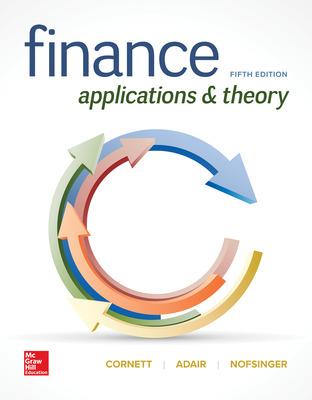Question
2. Consider two bonds, one issued in yen () in Japan, and one issued in dollars ($) in the United States. Assume that both government
2. Consider two bonds, one issued in yen () in Japan, and one issued in dollars ($) in the United States. Assume that both government securities are one-year bonds paying the face value of the bond one year from now. The exchange rate, E, stands at 1 dollar = 100 yens. The face values and prices on the two bonds are given by
| Face Value | Price | |
| United States | $10,000 | $9,700 |
| Japan | 10,000 | 9,350 |
a. Compute the nominal interest rate on each of the bond
b. Compute the expected exchange rate next year which is consistent with the uncovered interest parity.
c. If you expect the dollar to appreciate by 7% relative to the yen, which bond should you buy?
d. Assume that you are a U.S. investor. You exchange dollars for yens and purchase the Japanese bond. One year from now, it turns out that the exchange rate, E, is actually 96 (1 dollar = 96 yens). What is your realized rate of return in dollars compared to the realized rate of return you would have made had you held the U.S. bond?
e. Are the differences in rates of return in (d) consistent with the uncovered interest parity condition? Why or why not?
Step by Step Solution
There are 3 Steps involved in it
Step: 1

Get Instant Access to Expert-Tailored Solutions
See step-by-step solutions with expert insights and AI powered tools for academic success
Step: 2

Step: 3

Ace Your Homework with AI
Get the answers you need in no time with our AI-driven, step-by-step assistance
Get Started


